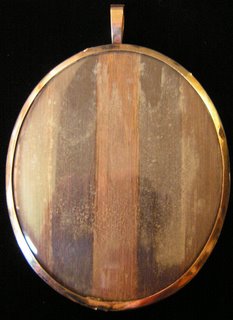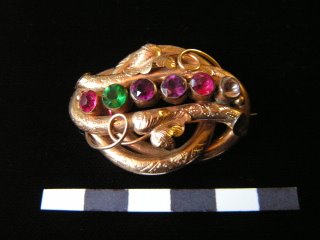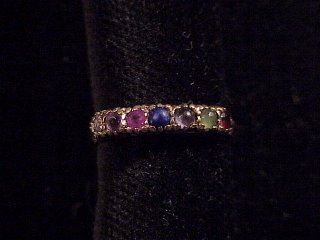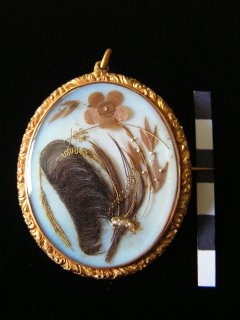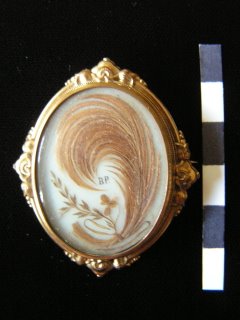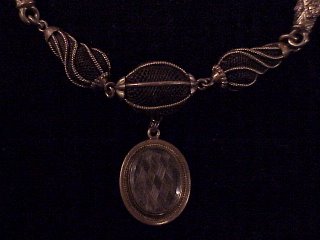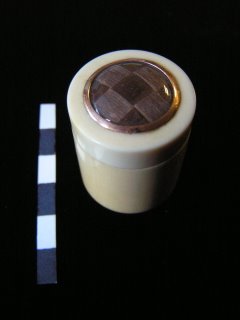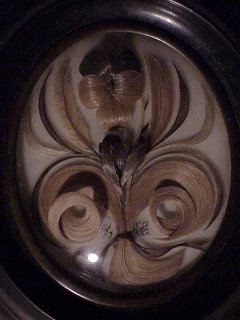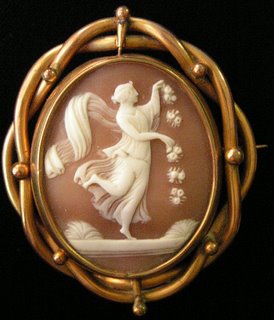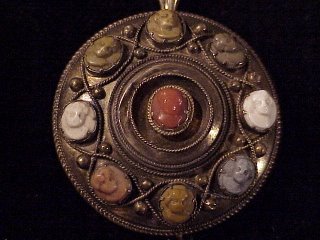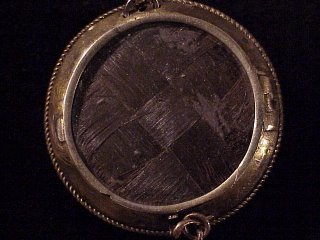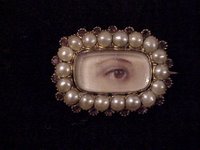 “When full dressed she wore around her neck the barrenest of lockets, representing a fishy old eye, with no approach to speculation in it” – Charles Dickens, 1848
“When full dressed she wore around her neck the barrenest of lockets, representing a fishy old eye, with no approach to speculation in it” – Charles Dickens, 1848Eye miniatures are perhaps the most intriguing yet misunderstood form of portraiture. It has taken me two years to sort through the confused and contradictory literature on eye miniatures, so you will excuse me for not providing too many details while my article goes through the peer review process. I will update this post with many more details upon the publication of my research. Suffice it to say, most of what you’ve read on eye miniatures is bunk. For example, I have documented that Richard Cosway DID NOT paint the first eye miniature, but more on that later.
Eye miniature painted in watercolor on ivory wreathed with garnet and turquoise pansies, pearls, and hair on the reverse. The social role of this eye miniature in sentimental reverie may be seen in the contemplative symbolism of the stones and flowers. From the French word pensée, the pansy is a pun meaning “think of me.” The turquoise, owing to its color, was symbolic of the flower, “forget-me-not,” and the pearls symbolized tears. This miniature was featured in Warman's Jewelry: Third Edition by Christie Romero.

Reverse of the above eye miniature showing the hairwork.
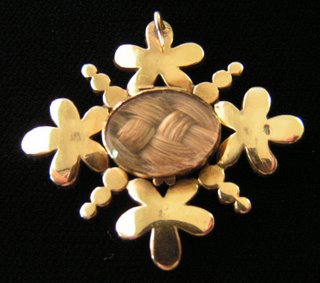
Eye miniature painted in watercolor on ivory and surrounded by pearls and garnets.

There are in fact some links between eye miniatures and the eye of God as a popular devotional symbol. The allegory of love in the pendent below features a hairwork altar with two hearts aflame pierced by Cupid’s arrow beneath the eye of Providence on ivory and surrounded by beautiful cannetille work.
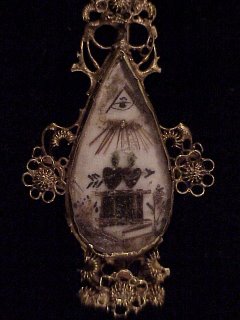
WARNING: Because eye miniatures are so expensive, the market has been recently flooded with fakes. Eyes painted on paper are the easiest to fake, so my general rule is to keep with eyes painted on ivory. However, this is no guarantee of authenticity. Sadly, portrait miniatures are sometimes cut into for the eyes, which, in turn, are reframed in period jewelry. These should be reasonably obvious to experienced collectors. My advice is 1) do not buy any eye miniatures about which you have any doubts or 2) only buy from dealers you trust.




